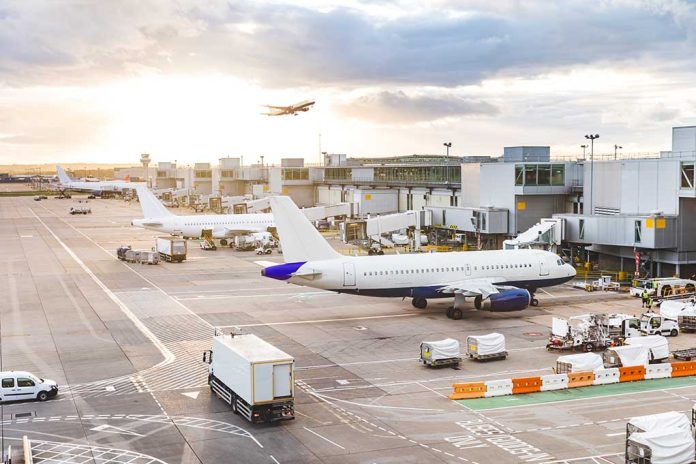🔴 Website 👉 https://u-s-news.com/
Telegram 👉 https://t.me/usnewscom_channel
The Department of Transportation launches an aggressive plan to tackle the 3,000 air traffic controller shortage that has strained America’s aviation system, with major financial incentives for both recruits and veterans considering retirement.
At a Glance
- Transportation Secretary Sean Duffy announced a comprehensive plan to fill a critical shortage of 3,000 air traffic controllers
- New financial incentives include 30% salary increases for new hires and a $5,000 bonus for completing the FAA Academy
- Retention bonuses will be offered to experienced controllers nearing the mandatory retirement age of 56
- The DOT aims to achieve full staffing levels within 3-4 years
- Additional resources will be provided to help reduce the 35% trainee dropout rate at the FAA Academy
Addressing Critical Aviation Staffing Shortages
The U.S. Department of Transportation has unveiled a strategic plan to address the severe shortage of 3,000 air traffic controllers currently plaguing the Federal Aviation Administration. Transportation Secretary Sean Duffy announced the initiative as part of a broader effort to ensure aviation safety and improve the efficiency of America’s increasingly congested airspace. The plan includes significant financial incentives designed to attract new talent to the profession while encouraging experienced controllers to delay retirement.
The comprehensive approach targets both ends of the career spectrum, offering substantial salary increases for new hires while creating financial incentives for veterans. The shortage has been growing for years, putting pressure on existing controllers and raising safety concerns among aviation experts. With air travel continuing to increase post-pandemic, the staffing crisis has become a top priority for the Transportation Department under President Trump’s administration.
Enhanced Recruitment and Training Initiatives
A key component of the plan involves streamlining the notoriously rigorous hiring process for air traffic controllers. The FAA Academy in Oklahoma City, which serves as the primary training facility for controllers, currently sees a 35% washout rate among trainees. The new initiative will provide additional resources to help students pass exams and complete their certification. New hires will receive a 30% salary increase and a $5,000 bonus upon successful completion of the academy program.
The DOT has set an ambitious timeline, with Secretary Duffy stating that the department aims to achieve full staffing levels within three to four years. This accelerated hiring push represents one of the most aggressive recruitment campaigns in the FAA’s history. The strategy also includes signing bonuses for controllers willing to work at less popular or understaffed tower locations, addressing geographical imbalances in the workforce distribution.
Retaining Experienced Controllers
Equally important to the department’s strategy is keeping experienced controllers on the job longer. Air traffic controllers face a mandatory retirement age of 56, but many choose to leave even earlier due to the high-stress nature of the position. The new plan includes a deal with the National Association of Air Traffic Controllers to offer retention bonuses to those approaching retirement age, providing financial incentives to stay in the tower rather than pursuing early retirement.
The retention incentives acknowledge the critical value of experienced controllers, whose expertise cannot be quickly replaced by even the most promising recruits. Controllers with decades of experience provide not only operational capability but also mentorship to newer controllers, making them especially valuable assets during this staffing transition. These financial incentives are expected to remain in place for several years as the FAA works to rebuild its controller workforce.
Technology and Infrastructure Upgrades
Beyond personnel initiatives, the Transportation Department plans to announce significant air traffic control technology and infrastructure upgrades shortly. These improvements aim to modernize the nation’s air traffic control system, potentially reducing workload on individual controllers while enhancing safety. The technological upgrades represent a parallel strategy to address the challenges facing America’s aviation system.
The comprehensive approach demonstrates the administration’s commitment to aviation safety and efficiency as air travel continues to grow. By addressing the controller shortage through both recruitment and retention strategies, the DOT hopes to stabilize the air traffic control workforce and ensure that America’s skies remain among the safest in the world despite increasing demands on the system.
